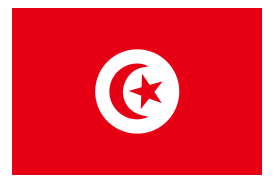Language/Tunisian-arabic/Culture/Traditional-Tunisian-Music
| ◀️ Medical Vocabulary — Previous Lesson | Next Lesson — Contemporary Tunisian Writing and Poetry ▶️ |
Tunisia has a rich and diverse cultural heritage, which includes traditional Tunisian music. In this lesson, we will explore the musical traditions of Tunisia, the various styles and instruments used in traditional Tunisian music, and the cultural significance of this art form.
After mastering this lesson, these related pages might interest you: Traditional Food and Drink & Contemporary Tunisian Writing and Poetry.
History of Tunisian Music
Traditional Tunisian music has its roots in ancient times, dating back to the Phoenician era. Over the centuries, the music has been influenced by various cultures including Arabic, Ottoman, Andalusian, and Berber. The style of music played in Tunisia has varied throughout its history, but it has always been an important part of Tunisian culture and identity.
Styles of Tunisian Music
Tunisian music can be divided into several distinct styles, each with its unique characteristics and instruments. Here are a few of the most popular styles:
Malouf
Malouf is a classical style of Tunisian music that originated in the Ottoman era. It is characterized by the use of the oud (a lute-like stringed instrument), the nay (a type of flute), and the violin. The lyrics are often written in Arabic and describe love and nature.
Stambali
Stambali is a religious style of music that is performed during trance-like rituals known as lila. The music is typically accompanied by dancing and incorporates elements of African, Berber, and Arabic culture. The instruments used in Stambali include the darbuka (a type of drum), the karakab (a type of metal castanet), and the sintir (a three-stringed bass instrument).
Mezoued
Mezoued is a popular style of Tunisian music that is often played at weddings and other social events. It is characterized by the use of the tablah (a goblet-shaped drum), the zukra (a type of flute), and the mezoued (a type of bagpipe). The lyrics are often improvised and sung in Tunisian dialect.
Instruments Used in Tunisian Music
There are several instruments used in traditional Tunisian music. Here are a few of the most common:
Oud
The oud is a stringed instrument similar to a lute. It has a deep, warm sound and is considered one of the most important instruments in Tunisian music. The oud is used in many different styles of Tunisian music, including malouf and Ottoman classical music.
Nay
The nay is a type of flute that is made from bamboo or reed. It has a unique, breathy sound and is often used in malouf and Sufi music.
Darbuka
The darbuka is a goblet-shaped drum that is commonly used in Arabic music. It is also an important instrument in Stambali music.
Sintir
The sintir is a three-stringed bass instrument that is used in Stambali music. It has a deep, resonant sound and is often played in a repetitive rhythm.
Cultural Significance of Tunisian Music
Tunisian music is an integral part of Tunisian culture and history. It reflects the country's diverse cultural heritage and has played an important role in shaping its identity. Many Tunisian songs tell stories of love, nature, and daily life, and the lyrics often carry meanings that are important to the Tunisian people. Music is also an important part of Tunisian social events, such as weddings and festivals.
Learning about traditional Tunisian music is a great way to connect with the country's rich culture and heritage. Whether you are interested in the history of the music or want to learn how to play an instrument, there is something for everyone in the world of Tunisian music.
Other Lessons
- Traditional Crafts and Skills
- The Phoenician Period
- Contemporary Tunisian Writing and Poetry
- Islamic Celebrations
- Modern Tunisia and Geography
- Independence Day and Other National Holidays
- Popular Legends and Characters
- Traditional Food and Drink
- Daily Life and Customs
Template:Tunisian-arabic-Page-Bottom
| ◀️ Medical Vocabulary — Previous Lesson | Next Lesson — Contemporary Tunisian Writing and Poetry ▶️ |

